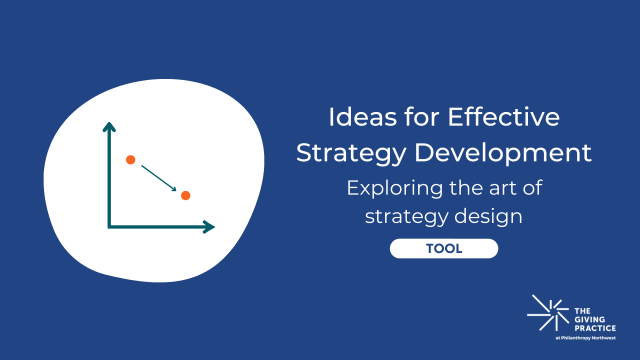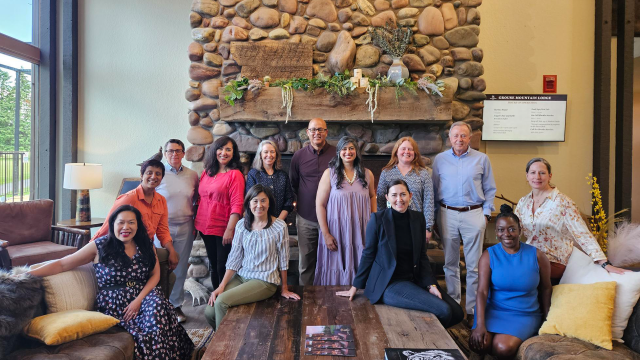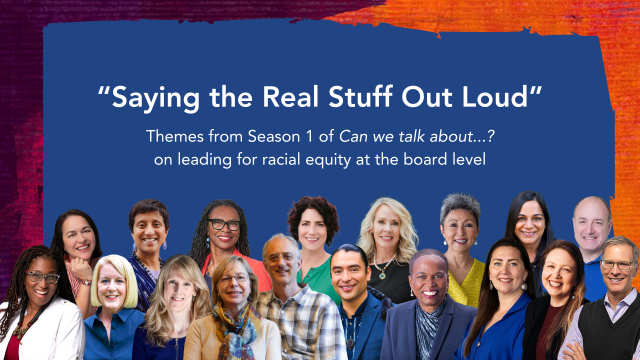Jill Blair and Malka Kopell
In March, we co-hosted a conversation with Seattle CityClub with Daniel Kemmis, author of "Philanthropy and the Renewal of Democracy" and Daniel Stid, director of the Madison Initiative at the Hewlett Foundation about how foundations can engage in building healthy institutions of democracy. We're pleased to return to that theme, this time with news of a new report that Jill Blair and Malka Kopell wrote for The Aspen Institute Forum for Community Solutions.
Like the bridges and tunnels, railroads and water systems that comprise our physical infrastructure, a well-designed civic infrastructure can enable us to live more relational and economically vibrant lives.
What is civic infrastructure? It's the basis upon which ordinary people are able to participate in ordinary civic life, from joining neighborhood watch groups to entering the voting booth. Civic infrastructure is made up of places, policies, programs and practices that enable us to connect with one another, address our shared concerns, build community and solve public problems.
Much of our 20th century civic infrastructure emerged as a product of philanthropic investment: organizations and programs intended to advance equity, education and economic opportunity. We call upon philanthropy now, large and small, personal and institutional, to lead the rebuilding effort — to construct a 21st century civic infrastructure that leverages the resources we now have to solve the problems we still face.
We make this argument in our new report, 21st Century Civic Infrastructure: Under Construction, commissioned by the Aspen Institute Forum for Community Solutions, an effort deeply committed to creating a more equitable and just society by engaging all voices, hearts and minds in the enterprise.
Three Keystones to 21st Century Civic Infrastructure
To identify the fundamental basis for a 21st century civic infrastructure, we reviewed literature and engaged in conversations with people committed to public problems-solving: leaders across business, philanthropy, nonprofits and government. We landed on what we are calling “Keystones of 21st Century Civic Infrastructure,” the qualities that should be present in the programs and organizations we support:
- Engaging All Sectors. The 21st century is a time when the lines that once distinguished us are blurred. The boundaries between sectors are dissolving as we understand that the problems that plague our society — from income inequality to the education achievement gap — affect us all. We should mindfully support and encourage those who seek to engage all sectors in the problem-solving enterprise. When and why do we resist setting more places at the table for cross-sector participation? When and why do those in whom we invest welcome public and private sector participation in their work? What more do we need to learn and share to be better partners with others?
- Enlisting All Voices. The 21st century has brought us tools and technologies for real-time feedback from consumers of services. It's time to employ these tools to hear the voices of those whose lives we seek to improve — those on the margins who must be brought to the center. Who qualifies as on the margins in the work we support and how are we hearing their voices? When are the voices of ordinary people incorporated into the strategies we support and how? Who are our constituents and how do we engage with and listen to them?
- Building Vertical and Horizontal Thoroughfares. The 21st century is a time of information exchange. Our new civic infrastructure must include capacity to move information, knowledge, policy and practice from local to national and national to local. We need to build the capacity and commitment to exchange wisdom, practice, policy and knowledge horizontally as well, between and among like-minded efforts. To what extent are we communicating with others in our fields of practice/interest and to what end? To what extent should and do those in whom we invest seek to contribute and influence public policy — to scale their success by sharing it? Where are we sharing with and learning from others and how are we putting that learning to practice?
Our monograph is a work in progress, meant to stimulate and form the basis for communities to consider how to strengthen, supplement or reinvent their local civic infrastructure. Philanthropy has an important role to play, not only in shouldering these community conversations, but in examining its own behaviors and investments and identifying ways to encourage the conscious construction of a 21st century civic infrastructure that offers the strongest possible foundation for the greatest possible participation of ordinary people in ordinary life.
Jill Blair is a firm believer in the power of people to effect positive change. Her day-job is to consult with nonprofits and philanthropy on issues of strategy, leadership and organizational development. Her passion is democratic practice. She is founder of PACE – Philanthropy for Active Civic Engagement. Jill lives in Menlo Park, Calif. Email her at jblair@jillblairconsulting.com.
Malka Kopell has spent much of her life trying to get people to work together better in the civic context. She has done that in a variety of roles, as nonprofit leader, philanthropy program officer, director of an academic research institution, and as a consultant to nonprofits and government. She recently co-founded The Civity Initiative, which helps strengthen civic networks, particularly across divides, to support community problem-solving and resilience. Malka lives in San Francisco, Calif. Email her at malka.kopell@sbcglobal.net.


